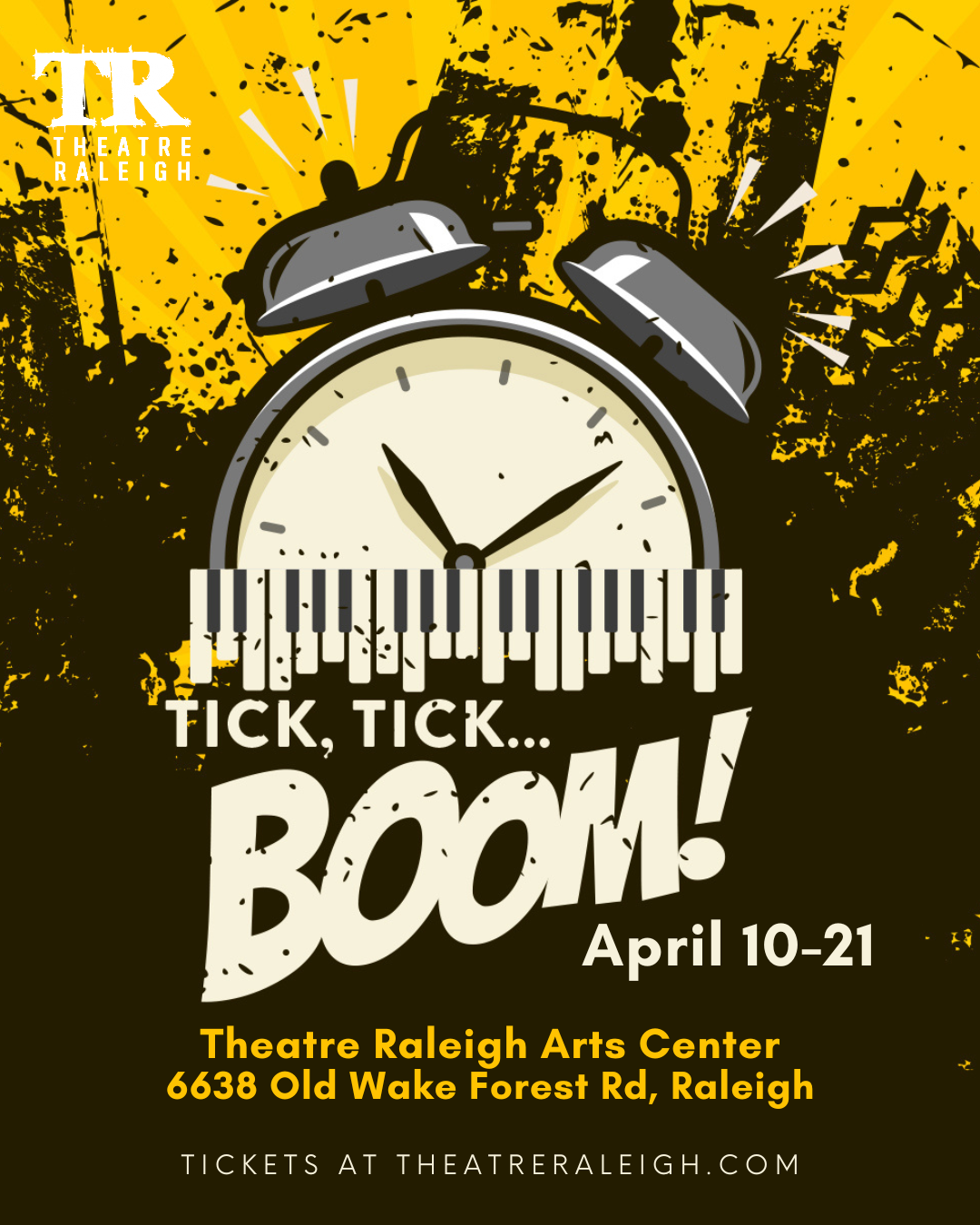|
When most people think of Jonathan Larson, they think of Rent, the musical that swept and captivated the nation back in the 90s. However, Larson had another great, semi-autobiographical work up his sleeve--Tick, Tick . . . Boom. This powerful musical, set in 1990, got its start as a one-man show only to be revamped and revised by playwright David Auburn following Larson’s untimely death. The result, which blends both beautiful music and a gut-wrenchingly honest story of striving for artistic success, is now onstage at Theatre Raleigh, under the precise and innovative direction of Amy Spanger. The opening night performance was graced by a close personal friend of Larson’s, which added an even more intimate, enthralling touch to the production. Of course, intimacy has never been a problem for Theatre Raleigh. Like many shows before, this one plays out in the welcoming De Ann. S. Jones Theatre space. Only, this time, it’s been decked out with Rent-style railings, a raised platform that features a full band, and, best of all, a smoggy, dark surrounding area that effectively represents the vast possibility of the story’s NYC setting. It’s not just Becca Fowler’s scenic design that shines here, however. The small, three-person cast convincingly portrays a multitude of characters, taking care to clearly differentiate each one. At the forefront is Ian Fairlee, who makes for a charming and relatable leading man. As Jon, the story’s protagonist, he doggedly pursues his writing dreams and bravely—at least most of the time—stares down the possibility of defeat. Fairlee creates a Jon who is worth rooting for, a character that touches the dreamer inside of every viewer. By his side are his best friend, Michael, played to perfection by Lawrence Dandridge, and his girlfriend, Susan, sweetly acted and powerfully-voiced by Ellie Barone. Both of his pals have “sold out,” at least according to Jon’s standards, but he’s resisting the pressure, trying his best to make his dream come true. And, while it may seem like his friends act as foes to his vision, the well-rounded script and emotional acting clarify that that’s not the case. Dandridge’s Michael is both funny and tender. He goes from making audiences laugh with his delivery of “No More,” a song celebrating a better life, to making them cry during “Real Life,” which reflects on broken dreams and lost opportunities. Similarly, Barone infuses her character with depth. In her apt hands, Susan is never in danger of being viewed as a “nag.” Instead, she’s the complex, sympathetic character she was always intended to be. As the actors bring these three separate-but-together stories into perfect cohesion, viewers delight at the iconic 90s fashion, courtesy of Kishara McKnight, and the pitch-perfect music. Featuring an emotion-sweeping narrative, shades of Seinfeld, and three characters who feel so real, so vibrant that you want to hug them, Tick, Tick . . . Boom is yet another hit for Theatre Raleigh. Both inspiring and tear jerking, it’s the perfect play for reigniting dreams and reminding us all that, sometimes, time is on our side. The performance runs through April 21st, and tickets are available here.
0 Comments
|
TAR
We love the arts. We write about them. Founded 2018. Categories
All
Archives
January 2024
|


 RSS Feed
RSS Feed